As the Internet has evolved, we saw its transformation from Web 1.0 to Web 3.0 known as the third iteration of the Internet. Since Web 3.0 is a decentralized web, the main feature of it is the increasing power of decentralized finance (DeFi). It is considered a boon for startups and entrepreneurs due to its compliance with all the modern technology and security requirements. DeFi opens doors to the global digital market revamping business processes. But its platforms have still some limits, such as skyrocketing transaction fees, low throughput and bad impact on the environment. A new protocol called NEAR has come into play to eliminate the aforementioned flaws. NEAR protocol is industry-leading due to sharding technology offering scalability solutions for the enterprises.
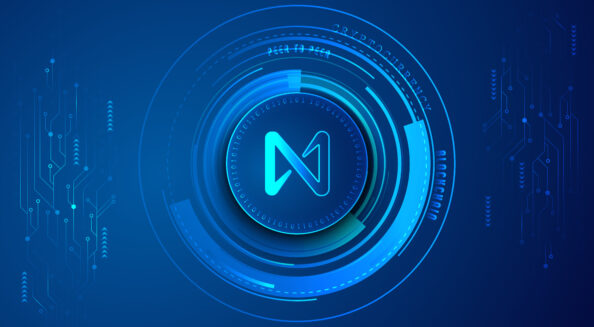
NEAR protocol is a smart contract-capable blockchain that strives to provide the best possible environment for creation of scalable DApps that could be easily linked to open financial networks. The network can execute up to 100,000 transactions per second and create a new block in just one second addressing the drawbacks of systems in competition including low throughput and interoperability issues. NEAR is running on Proof-of-Stake (PoS) consensus mechanism dubbed Nightshade, the main pillar of which is sharding.
What does sharding mean? It is splitting the blockchain network into several segments known as nodes in order to process a part of the network’s transactions rather than the whole blockchain. This mechanism offers scaling solutions and high-speed transactions making it ideal for mass adoption.
The network has its own native token called NEAR and utilizes a new block production technique called “Doomslug”.
The Protocol successfully solves the issue of blockchain trilemma striving to prove the coexistence of the three major elements: decentralization, scalability and security.
NEAR is supposed to be developer and user-friendly that is achieved by the incorporation of: human-understandable user account names and the opportunity for users to interact with the network without a wallet creation.
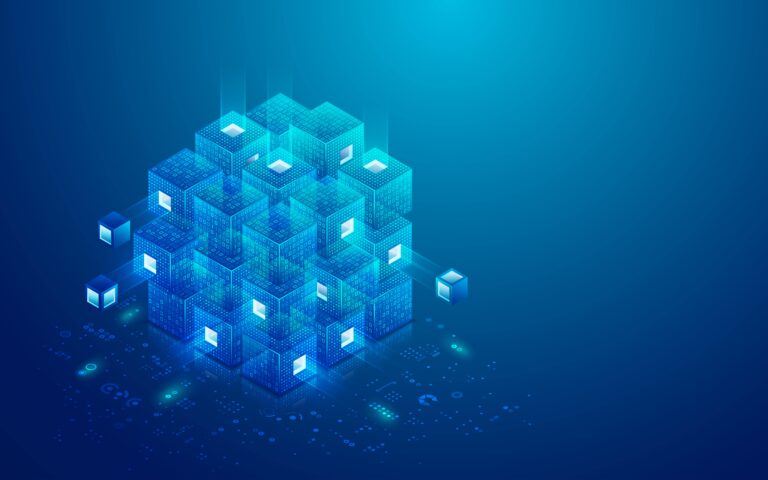
Initially, NEAR was a machine learning project, Alex Skidanov and Illia Polusukhin who previously worked for Microsoft and Google respectively wanted to investigate program synthesis. During the process of program synthesis research they explored current programmable smart contract platforms and crypto payments, tried various blockchain protocols and realized that the existing tech didn’t satisfy their requirements. One day the team made up their mind to pivot away from their area of work and focus on blockchain platform development to create a blockchain that would pave the way for a fully sharded and permissionless gen-3 network.
NEAR’s implementation began in summer 2018 and it was launched into the mainnet in April 2020, five months later its token took place on CoinList.
Nowadays NEAR’s collective is a distributed team scattered around the globe represented by individual organizations or contributors, who are working under the project on their own authority to bring the technology to life. It’s possible through its open-source software allowing code modification by anybody.
It should be mentioned that NEAR is a fully decentralized network meaning no designated authority has influence over it and even the teams, who stood at the origins of the development, are deprived of the right to censor or cease operating. Once it is launch-ready everybody can make changes in the code as it is open-source.
People with diverse backgrounds are working for NEAR from such companies as Microsoft, Google, Meta, etc.
Despite the high volatility level being involved, it’s always hard to make predictions or give a forecast of the cryptocurrency destiny even for the most eminent experts. But anyway let us discuss how the NEAR token is doing in 2022.
At the beginning of the year NEAR experienced an immediate surge rising by 55.05% to hit $20.869. That was explained by its attractiveness to investors due to high-speed, cost-efficiency, and dependability collateral. More so, a plethora of applications were built on the NEAR platform because NEAR was built for developers by developers, i.e. a developer isn’t required to learn a new language or gain new skills in order to build an app on the NEAR platform.
But then things got worse, turmoil in business caused by the geopolitical crisis and anxiety around rate hikes dragged the price down to $7.405.
After a while, the Protocol raised 350 000 000$ in the financing round from such world leaders as FTX, Hashed, Dragonfly, etc. This money was intended to be spent on the improvement of the ecosystem’s infrastructure and building business relationships with those wishing to launch on NEAR, but still the project looks weak.
Startups are incentivized to launch on NEAR as the platform grants them $50,000 afterwards you are given an access to the chat with similar projects trying to help each other because no further support from the side of the Protocol is provided. Developers with NEAR expertise are hardly to be found. The hackathons take place but there’s not even a demo day to present your project in order to attract investment, the only projects that win are those having a close contact with the core team of NEAR.
By May 2022 the token price hit a bearish market, so NEAR decided to make profit from collapse of the terraUSD (UST) stablecoin by posting an open invitation to the Terra community to team up.
Although, NEAR token jumped over 20% after UST integration, it didn’t protect NEAR from the coming appalling summer that was about to hit the industry. By July the NEAR token’s value dropped to less than 4$.
A network compatible with the Ethereum smart contracts called Aurora was created on NEAR and considered to be a game changer as its idea is that you can launch on a subsidiary of NEAR which is EVM-compatible meaning that there’s no problem with devs and then you are gradually transferred to NEAR. But it didn’t bring the expected results, no project was launched there and everybody soon forgot it.
So, NEAR is possibly a future-proof project upon condition that a certain work will be done, particularly marketing campaigns like media advertising, reach of the target audience expanding and whatever it takes to achieve mass adoption, everything that some professionals in crypto space are capable of. But it still doesn’t guarantee that NEAR will instantly hit the bullish market because the token success doesn’t always depend on a good product in an unpredictable crypto space.

NEAR is ultimately utilized in the following cases:
It should be noted that one has to lock NEAR in order to rent data storage space, it’s beneficial in the long run as it incentivizes users not to sell their tokens, instead keep it as a collateral that will probably yield profit or financial gain in the future.
As of validators, they gain NEAR tokens every epoch making up 4.5% of the overall NEAR supply on a yearly basis.
Moreover, developers who built smart contracts are given a part of transaction fees produced by their contracts. In case there is a remainder from transaction fees it is burned thus creating NEAR’s scarcity. Additionally, a protocol treasury was invented to obtain 0,5 of the whole NEAR supply each year to be further employed as an investment into the ecosystem evolvement.
NEAR protocol offers cross-chain composability, for instance, the creation of the Ethereum bridge allows transferring of ERC-20 tokens from Ethereum to NEAR.

When network participants make data alterations on blockchain, people verifying these changes incur some costs for the computing energy required to it. So, NEAR as well as other programmable blockchains makes a compensation to the validators by charging transaction fees dubbed as gas fees.
It’s a common practice to pay some fees for using a service or application. There’s still some difference between Web 2 cloud service providers like Google Cloud or iCloud and blockchain ones. In the case of blockchain users are charged when they interact with the app, whilst users of Web 2.0 pay for the infrastructure in advance. However, sometimes it creates a poor user experience to the ones who used to enjoy Web 2.0,and to fix it, developers are provided with the ability to pay gas fees for users.
Speaking of gas fees, one should be aware of its main ideas:
Thanks to fast block creation on NEAR, the amount of gas per block is relatively low.
Below you can find approximate calculations:
10¹² gas units ≈ 1 millisecond of “compute” time = 0.1 milliNEAR charge.
Although, this is a rough estimate of 1 millisecond, because NEAR units encapsulate not only computational power, but also storage time and bandwidth, it is still a good example to get to know how gas units are calculated.
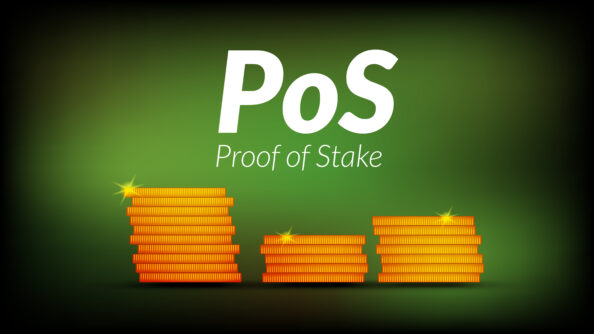
NEAR Protocol has a Proof-of-Stake (PoS) consensus mechanism possessing a distinguishing feature named sharding enduring NEAR with a competitive edge among other smart contracts-capable blockchains.
Let’s shed light on the technologies making the core of the NEAR platform:
Nightshade is a sharding solution on blockchain that splits the process of handling transactions among validator nodes. In this case each node has a fraction of transactions offering exceedingly high throughput whilst decreasing the transaction fee. So, validators process transactions separately on numerous shards, every shard creates a fraction (called a ‘chunk’) of the following block that is then added to the main chain.
Rainbow bridge is an application on NEAR that enables users to move assets between NEAR and Ethereum via smart contracts. Initially, a user deposits tokens on Ethereum smart contracts where they are locked, afterwards new tokens are created on NEAR and act as the original ones. The reverse procedure could also take place in case someone wants the authentic token back since it is stored through the smart contracts. Rainbow bridge is permissionless and decentralized unlike most bridges in crypto space, so there’s no single authority capable of halting or removing assets flowing between the ecosystems.
Aurora represents a layer 2 network on top of NEAR intended to execute Ethereum DApps on the NEAR blockchain. Since Aurora is EVM-compatible, programmers do not need to learn the working principles of new tools to proceed with the development of Ethereum applications, they can just write smart contracts on Solidity and easily transfer them to the NEAR Protocol. The Protocol’s scalability and Ethereum dev tooling make NEAR a compelling blockchain.

Staking using PoS is a process of supporting a blockchain and validation of transactions by granting assets to the network. In order to stake NEAR tokens users must create a wallet account, the process requires to set up an account and fill it with the personal details. A noteworthy fact here is that 3 tokens are enough for proper functioning of the wallet, this amount is required to cover the expenses for wallet and account ID creation.
Let us look at two main ways of staking on the NEAR network with different roles and rewards depending on the accountability level placed on a participant while staking.
Validator Staking
The validators are required to stake a minimum threshold of a definite token quantity that is different every time and fluctuates depending on the amount of tokens other validators stake. These tokens mostly act as a collateral to ensure that a validator acts honestly. If any fraudulent activity takes place, the network burns part of the stake as a punishment.
The primary validators’ responsibility is block validation for what they are rewarded with transaction fees each epoch. An epoch is a specific period of time within the blockchain, in the case of NEAR it is 12 hours length. It’s not necessary to stake collateral each epoch, but in case of missing one, it will be then locked for three epochs before being released again.
Delegator Staking
There’s a possibility to delegate stakes to a validator individual or a validator pool in case users are willing to get rewards without taking responsibility for running a validator node. In this context users get a predefined percentage of the fees obtained by validators.
Delegators won’t be punished by the network for having chosen a validator who turns out to be a bad actor, the delegator will just lose the reward of the corresponding validator.
NEAR is a next-gen blockchain boasting a plethora of advantages that make startups and enterprises consider NEAR for building their blockchain-based solutions. Below we will find what is so appealing about NEAR:
NEAR aspires to create a healthy Web 3.0 ecosystem through its scalable and developer-friendly infrastructure. The protocol incentivizes millions across the world to generate new business solutions for a sustainable world development. More and more visionary companies tend to put a step ahead to transform the industry they are working in with the help of the blockchain. Let’s take a look at the most prominent use cases of NEAR.
1. Decentralized Finance
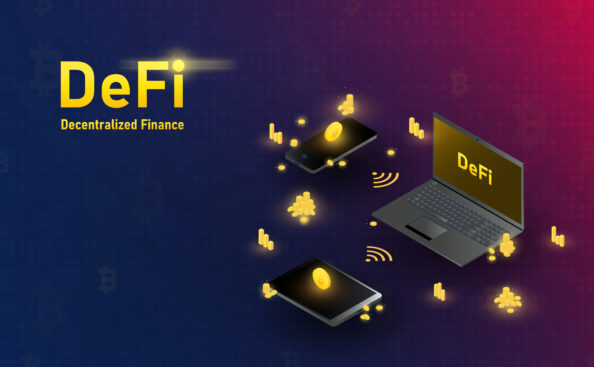
Decentralized Finance is an integral part of Web 3.0 and blockchain plays a major role here, recent times were witness to DeFi popularity arising from success on Ethereum with its smart contracts implementation. Unlike traditional fintech systems that take several weeks to complete transactions and perform other financial activities, DeFi can perform them in a fraction of a second. Huge interest in DeFi and the opportunities it proposes to users has made it more difficult for potential earners to enter the DeFi platform. Skyrocketing gas fees, network congestion and constantly growing prices of tokens create a high barrier of entry for newcomers. NEAR has come into play to solve these challenges. Since the Rainbow Bridge was launched NEAR is available for DeFi, moreover all the assets originated in Ethereum are now fully functional on NEAR-based DApps.
2. Non Fungible Tokens
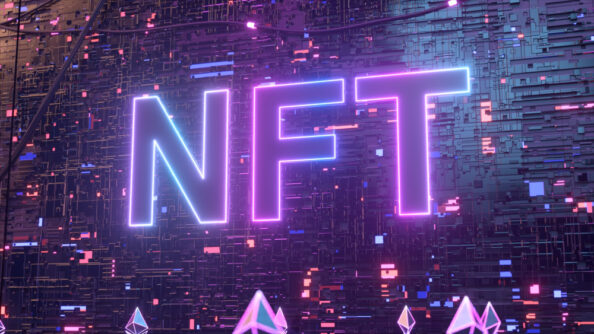
NFT is the so-called digital container for content and when it comes to its production, distribution and monetization various ways are accessible to the creators. NFTs are designed to record proof of ownership of digital files and create their scarcity resulting from limited supply and the fact that today a single person proves to own a unique asset. Being considerably faster than 2-gen blockchains and with budget-friendly transactions, NEAR is a perfect choice for NFTs.
3. Decentralized Autonomous Organization
A DAO is a decentralized autonomous organization that is a form of a legal structure without a central authority like CEO or board of directors. It employs a bottom-up management approach where each token holder participates in the platform’s governance and decisions are made by casting votes. All activities through the DAO are easily traceable on blockchain making it publicly visible. DAO makes the most of the NEAR Protocol to put an end to bureaucracy and to offer more upgraded accounts to token holders for storing their digital assets.
No blockchain is worth attention unless it has real practical value for users. What makes NEAR so prominent are killer apps the platform has already possessed. NEAR Coin is one of the most user-friendly coins combined with such technologies as Nightshade and Doomslug that makes it perfect for DApps development. Let us uncover NEAR-based projects currently available.
Mintbase
Mintbase is a marketplace similar to Ebay or Amazon that enables users, even the ones without any technical expertise, to create their own NFTs. There’s almost no limits on what kind of asset it could be, starting from artists or musicians selling their digital art ending in event tickets. Minters may create smart contracts and limit NFT’s transferability protecting it from illegal transfers produced by bad actors. Initially, Mintbase was based on Ethereum, but outrageously steep gas fees being sometimes even more expensive than a digital asset have resulted in switching to NEAR. The protocol allows split revenue and charges only 2,5% commission on every sale.
Paras
The main idea of Paras is to bring conventional collectibles to crypto space in order to keep it future-proof. Paras enables easy sale of digital assets in a trustworthy way validating the ownership with the help of NEAR through swift and low-cost transactions. Paras suits experienced collectors as well as novice NFT buyers as it pursues a curated approach in artist selection.
NPunks
NPunks is a NEAR’s variant of such popular projects as CryptoPunks and SolPunks. There’re 10,000 unique NPunks, no two are exactly alike. The collection will hold 111 bots, 88 zombies, 24 apes and 9 aliens.
Fair distribution of NFTs is assured by its random purchasing process with buyer’s personality kept confidential until the transaction is closed. The project is evolving smoothly, fostering a dedicated community by introducing various incentives like an airdrop for users owing more than 10 NPunks.
Zomland
So far Zomland is the most widespread game launched on NEAR that employs the play-and-earn concept. The game starts with the land acquisition that is utilized to mint zombies on a daily basis, their quantity is based on the land type, there’re free lands and paid ones, the more expensive the land is, the more zombies you get. Zombies have different rarity options, and could be used for battle, sale or killing to get ZML tokens which are indispensable for Monster minting.
Metaverse AI
Metaverse team is making good use of NEAR to build an immersive reality where users can interact with each other or their best-loved brands like in the real world. They are planning to produce the first AI-powered digital humans whose players will create their own worlds in the metaverse.
Pumpopoly
Pumpopoly is a casual browser game representing a virtual real estate simulator where players generate revenue by collecting a rent from other players who use the land for parking. The unique feature about Pumpopoly is that it is available on testnet allowing users first to test it for free in order to better understand what the game is about.

NEAR offers a great deal of unique features that help the network to thrive in today’s digital space. These are:
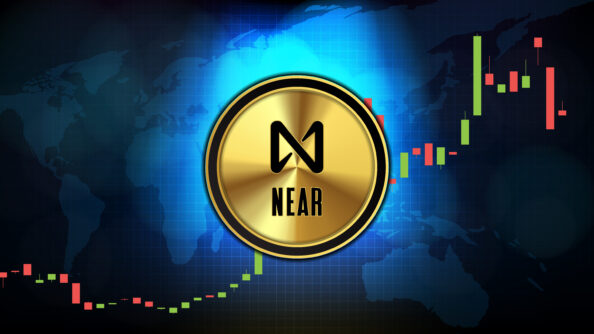
NEAR will strive to evolve the telecommunication sector’s infrastructure, increase the efficiency of payment methods and present solid development opportunities. More so, NEAR Protocol enables “trading” of telekom services because users are able to transfer tokens between different DApps derived from the Protocol.
Let’s have a look at its current market state and analyze the future movement of cryptocurrency based on some statistics and price patterns of NEAR. According to CoinGecko NEAR is $4,34 with the 24h trading volume of $286,035,439 holding the 25th position at the moment of writing. Further direction of the price depends on several factors like upgrades of the network, interest from investor’s side and its ability to sustain resistance levels. There are two possible outcomes regarding the NEAR’s price in 2022: the bullish forecast is $11.986 while the bearish one is $3.088.
On top of that, with continuous improvements and upgrades of the ecosystem the price could possibly reach its all-time record level of $20.44 relatively soon.

There are a lot of discussions taking place about NEAR across the community regarding its innovative nature and many crypto enthusiasts count on its breakthrough in the blockchain ecosystem.
Let’s take a look at the real-world picture of the Protocol. NEAR has got funding of $350,000 and was intended to improve the ecosystem, but it didn’t happen since even marketing campaigns haven’t been held and no influencers have been attracted. More so, there’s an alarming lack of specialists with NEAR development skills.
Startups are incentivized to launch on NEAR as the platform grants them $50,000, but no further support is provided. Generally, only the projects which are in close contact with the NEAR core team attract the attention of the potential clients and investors on hackathons.
It must be said that the NEAR Protocol is future-proof and technically advanced, but the problem is that it hasn’t got project-friendly attributes.
To sum it up, NEAR has a potential ,but there’s a lot that needs to be done to develop it.